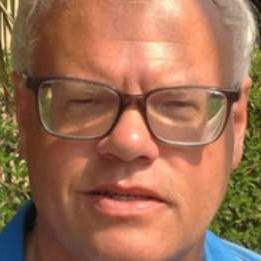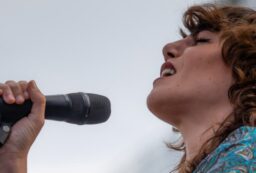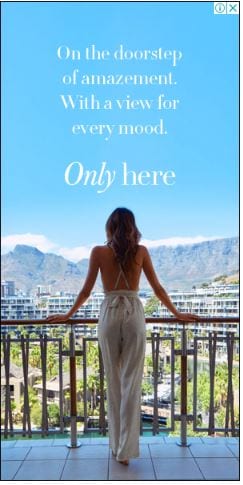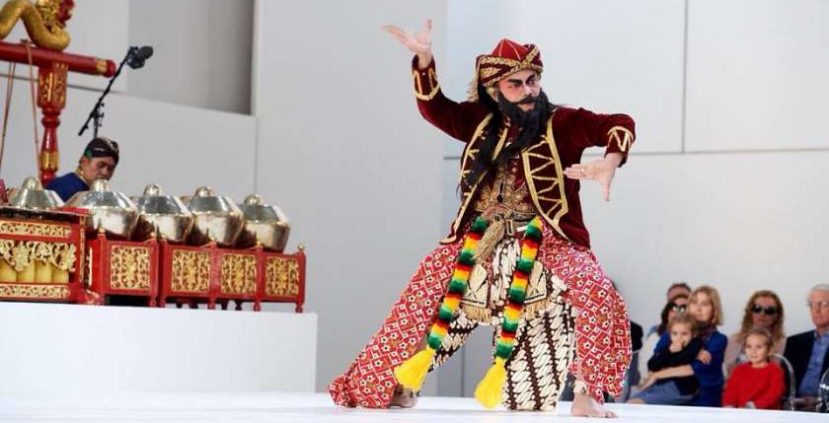
Maybe the Louvre Abu Dhabi, the world’s universal museum, a wonder of the contemporary world, is what would have happened if Faberge had designed spaceships. Perhaps there is an air of sheik chic to a dome that appears to hover over a cluster of cubist Arab white dwellings. Don’t worry, somewhere, authority has it, there are four uber-strong pillars supporting the roof.

Although Jean Nouvel’s creation is undoubtedly eye-catchingly iconic he would vigorously deny any accusations of attention-grabbing starchitecture. Nouvel’s museum, with filigree layers within the dome, is firmly rooted in local context. 7,200 perforations create the dappled pools of light so familiar in shaded souks roofed with sun-bleached palm fronds. But what happens when it rains? There is a transparent layer of film acting as waterproofing.

Not that it rains often on Saadiyat Island, a low-lying Robinson Crusoe stretch of sand just 500 metres off of the mainland of Abu Dhabi. Fifty years ago, this was barren, beautiful desert lapped by Maldives-like seas with turtles crawling between the occasional fishing boat.
Nouvel had two abundant commodities to work with: bright, blinding, brilliant light and sea views. The Louvre also channels Gulf of Arabia sea breezes for natural cooling.
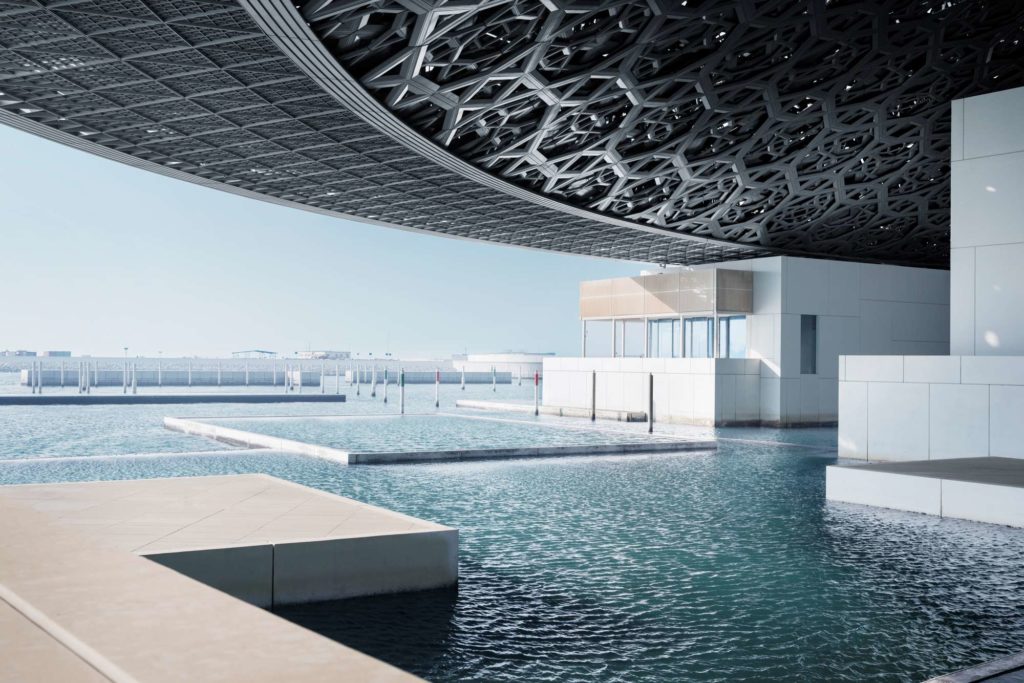
At times the effects are otherworldly. In his Moby Dick novel, Melville, has a chapter devoted exclusively to whiteness. You could write a sequel chapter on the sepulchral white of the halls, the irregular geometrically shaped glass display cases – backed by whiteness. Global echoes abound of Spain’s pueblos blancos, of Kubrick’s 2001: A Space Odyssey and of the Taj Mahal.
"The Louvre radically reinvents the museum. As Paul Klee famously said, and the words are etched into a Louvre wall of glass, “Art does not reproduce the visible but makes visible.”"
Abu Dhabi has grandiose plans for the cultural area of Saadiyat Island. There will also be a Guggenheim Museum. It’s a soft power strategy looking ahead to the days when the oil wells run dry.
Yet even Abu Dhabi’s staggering hydrocarbon wealth, budget billions, cannot fill a world class museum overnight. An agreement is in place for three decades to use the Louvre’s brand name and borrow some of France’s masterpieces. Currently David’s Napoleon Bonaparte crossing the Alps is the heroic poster boy on loan. And the Louvre opts for breadth rather than depth.
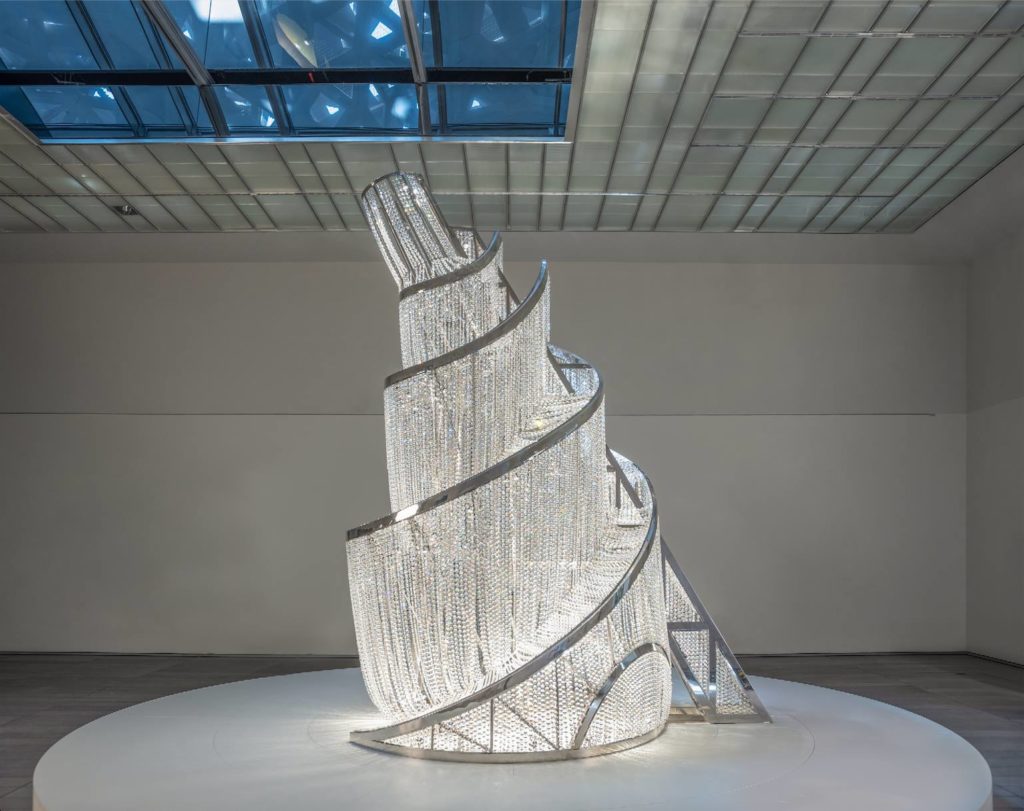
Strolling through the Louvre is like walking through time. The journey begins with the first villages spread across the globe – before nomadic men symbolically admitted that their wandering days were over and decorated their earthen cooking pots. Days before men took artworks to their graves as symbols of status, days before civilisations and empires. Old colonialist classifications of geo-political and religious are ditched for a wide sweeping history of the world.
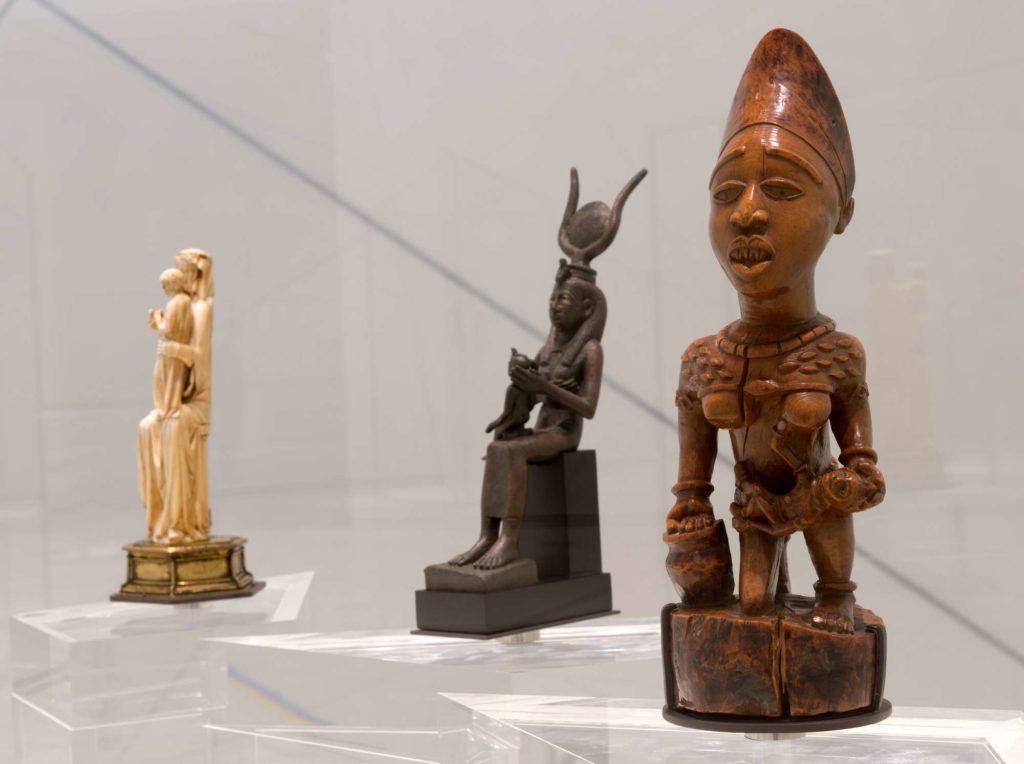
“Oh, I’d forgotten about Christianity,” said one visitor who had journeyed through millennia of forgotten dynasties and fallen empires. Unexpectedly he had come across a stained-glass window of deep rich blues and and silver helmeted crusading knights from the 12th century.
Was he suffering from culture shock? The Louvre radically reinvents the museum. As Paul Klee famously said, and the words are etched into a Louvre wall of glass, “Art does not reproduce the visible but makes visible.”

There are 4th century sculptures from the Mexican City of Teotihuacan, mosaics decorated with preparations for a Roman banquet near Carthage, Tutankhamen presenting his woes to Osiris the God. Suddenly, you make connections between glorious Chinese, Indian and South American civilisations while Europeans were still struggling to get the right consistency of the donkey-dung-daub on their fragile dwellings. Then, with your mind still freewheeling through millennia, the museum poses another question. What did Friedrich Nietzsche mean when he said, “We have art in order not to die of the truth”?
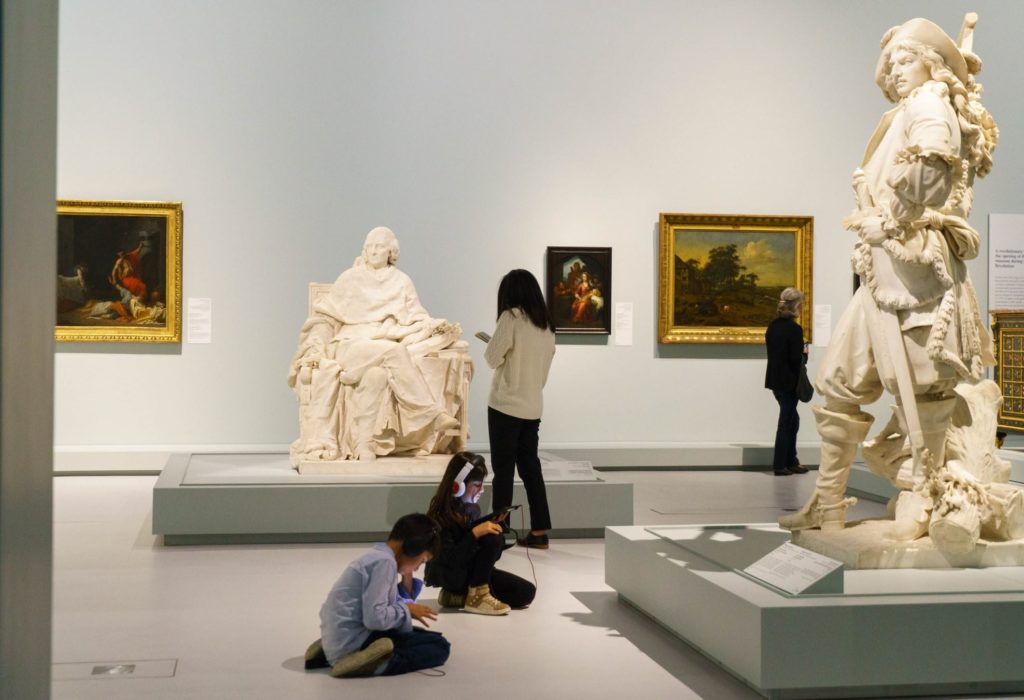
The Louvre Abu Dhabi is cavernous huge, easily swallowing up a long, long Quranic wall frieze, easily housing four towering Romanesque columns from 12th Beauville, France. In a light-filled exterior space, replicating an Islamic courtyard, Jerry Holzer has created vast stone walls engraved with three historic cross cultural texts: “Muqaddimah” from Istanbul, the Arcadian and Sumerian “Creation Myth” and “Essais” from 1588 by Michel de Montaigne.
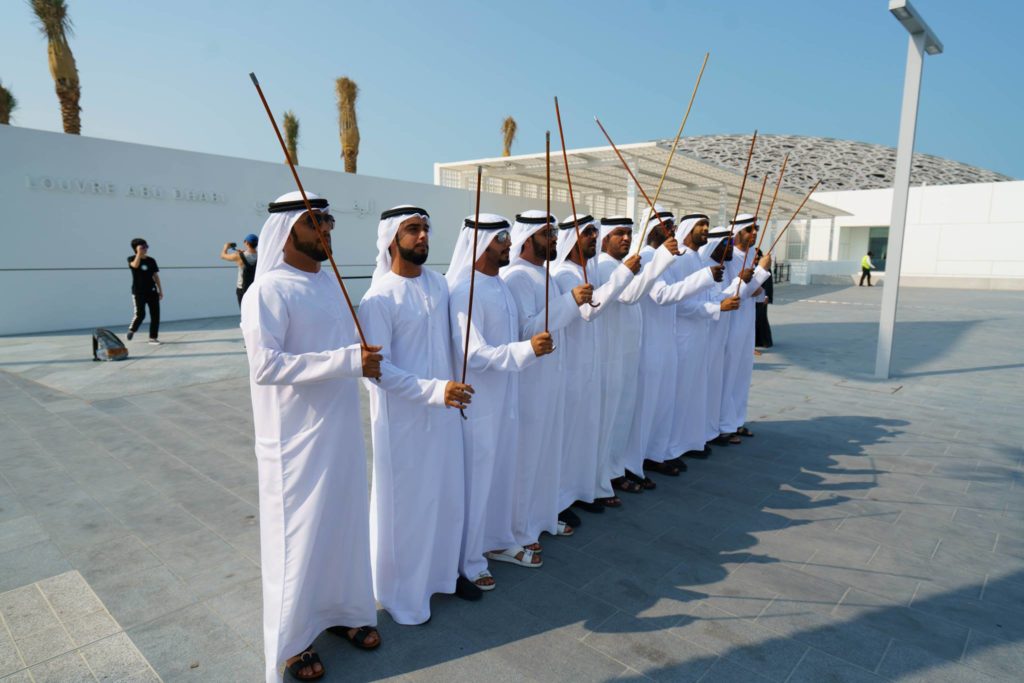
The Abu Dhabi Louvre’s ambitions are epic too. Its mission statement is to “see humanity in a new light”. And that light, like the pools of light flooding through the porous dome, will develop and frequently change as the museum acquires its own collection. Humanity, in its global diversity, is too complex a subject to grasp in just a morning or afternoon. You will need a return visit.





